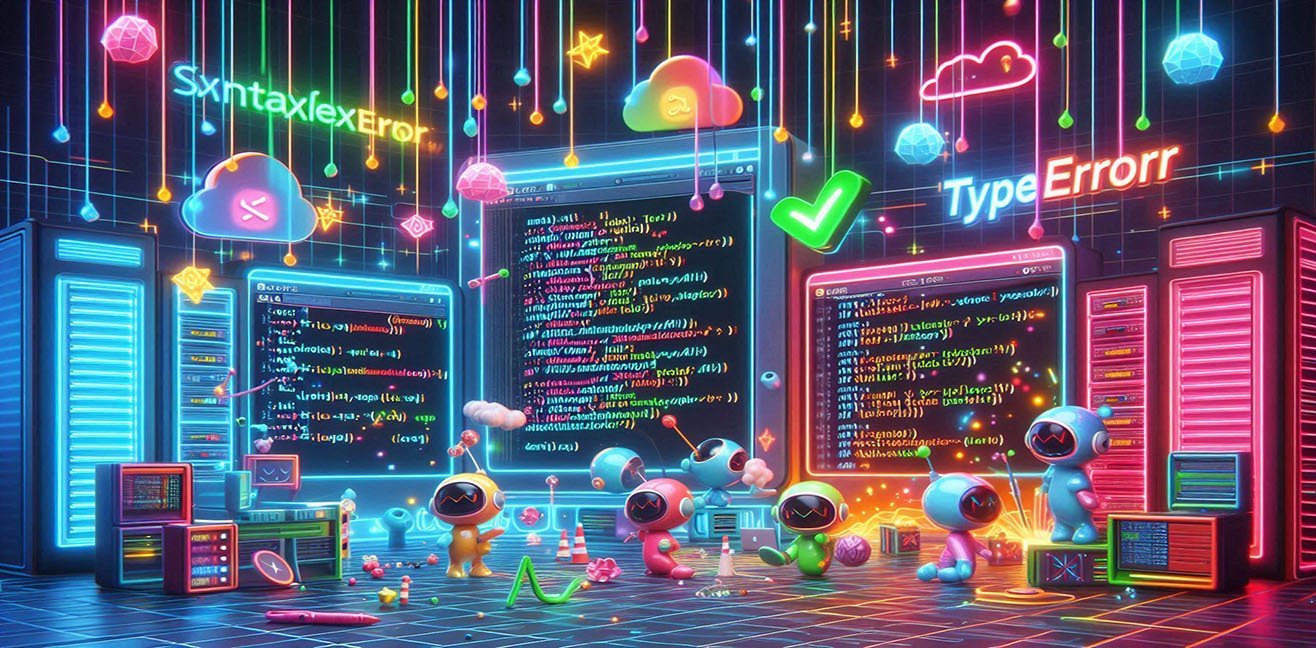(Welcome to the days when computers heal themselves!)
Once upon a time, developers spent hours hunting for errors.
SyntaxError? TypeError? RuntimeException? 😱
But now, thanks to self-healing code, your code finds its own bugs and fixes them! 😎💻
Yes my love, it’s not science fiction — AI, automatic error detection, and correction methods have brought this technology to life.
💡 What Is Self-Healing Code?
Technically:
Self-healing code refers to systems that automatically detect, analyze, and propose fixes for software errors.
Especially in large-scale systems:
- Server errors
- Data inconsistencies
- Code bugs
are detected immediately and often automatically corrected.
🛠️ Automatic Error Detection and Correction Methods
1️⃣ Static Code Analysis
- Code is scanned before compilation, and errors are reported
- Tools: PyLint, Flake8, SonarQube
- Tip: Regular analysis can reduce error rates by up to 50% 💡
2️⃣ Dynamic Code Analysis (Runtime Analysis)
- Errors are detected while the code is running
- Combined with unit tests, logging, and monitoring, it becomes super powerful ⚡
- Tools: pytest, unittest, AWS X-Ray, Azure Application Insights
3️⃣ AI-Powered Auto-Fixing
- Code suggestions and fixes are generated by AI
- Examples: GitHub Copilot, TabNine, Amazon CodeWhisperer
- Tip: AI doesn’t just fix errors; it also optimizes code style and performance 😏
4️⃣ Self-Healing DevOps & CI/CD
- Errors are detected during the pipeline
- If tests fail, AI intervenes and applies suggested fixes before re-testing
- Tools: GitHub Actions, Jenkins, GitLab CI/CD
🧠 How AI-Powered Self-Healing Systems Work
- Scans and learns your code
- Produces possible solutions when an error occurs
- Automatically fixes or redirects code execution
- Learns from logs and past errors to prevent future issues
💡 Tip: AI-powered self-healing systems can analyze millions of lines of code in seconds!
🔧 Technical Example: Simple Python “Auto-Fix” Simulation
Let’s do a demo, my love! 😎
A simple Python example simulating a system that fixes its own code errors:
# Self-Healing Python Demo (Simple)
def auto_fix_code(code_line):
"""
Simple demo: automatically fixes 'pritn' to 'print'
"""
fixed_line = code_line.replace("pritn", "print")
return fixed_line
# Buggy code
user_code = "pritn('Hello my love!')"
# Self-healing kicks in
corrected_code = auto_fix_code(user_code)
# Execute
exec(corrected_code)
💬 Tip: This is just a simple simulation, but real-world AI-powered self-healing can handle hundreds of lines and complex errors the same way.
🎮 Fun Mini Game: “Bug Catcher” 🐛
Let’s mix coding with a game!
This small Python game lets you catch bugs and earn points 😏
import random
def bug_catcher():
print("🐛 Welcome to Bug Catcher! 🐛")
bugs = ["SyntaxError", "TypeError", "NameError", "IndexError"]
score = 0
while True:
bug = random.choice(bugs)
action = input(f"A wild {bug} appeared! Type 'fix' to catch it: ")
if action.lower() == "fix":
score += 1
print(f"Good job! Score: {score}")
else:
print(f"Missed! Final score: {score}")
break
bug_catcher()
💡 Tip: You can run this game even in a terminal or cloud shell — fun and educational!
🧩 Where Are Self-Healing Systems Used?
- Web applications: Server errors fix themselves, reducing downtime
- Cloud services: Auto-scaling + self-healing for uninterrupted service
- Autonomous systems: Robots and vehicles fix errors independently
- DevOps & CI/CD: Automated tests and self-healing pipelines
💬 Real-life example: Netflix and Amazon actively use self-healing technologies on their servers. Users don’t notice, but millions of errors are fixed behind the scenes 😏
🚀 The Future of Self-Healing Code
- AI-powered self-healing will become an indispensable standard in software development
- Writing, debugging, and managing code will be faster and more fun
- Who knows, my love, one day our code might even message us:
“Hello, I fixed myself 😎”
💾 Final Word:
Self-healing code is not just a technology — it’s the superpower that protects software itself.
Bugs are no longer nightmares; with AI, coding becomes a fun game 😏💻
“Life is short, code is long — leave the bugs to AI, and focus on love!” 💘✨




